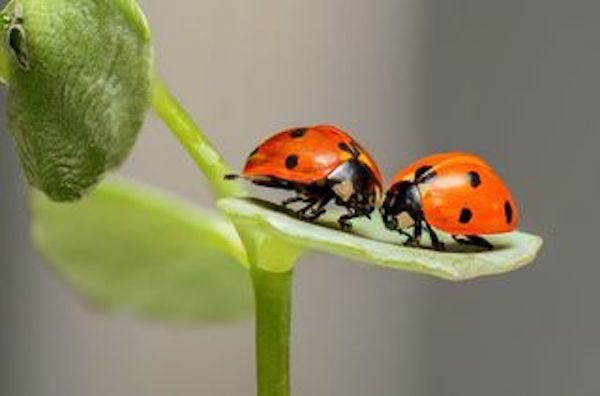
© Pixabay
People hate insects. They bite, snap, sting, and kill. Perhaps the most hated animal on the planet is the mosquito, despised for bringing malaria, dengue fever,
sleeping sickness and a host of other fatal and disfiguring diseases. The most frightening sci-fi film monsters, from
Alien to
Starship Troopers are giant,
intelligent insectoids. Whether it's the ticks bringing Lyme Disease or the vicious black flies of the north woods, lots of us would be happy to see insects disappear.
The problem is, we might, too.
Insects are a large part of the animal biomass of our planet. They are crucial to our survival in many ways, particularly as pollinators. People are vaguely aware that pollinating bees, necessary to so many of our crops, have been dying or disappearing in large numbers. They are less aware that many other insects are pollinators. Without these pollinators, crops don't grow.
A
recent study out of northwest Germany from the Krefeld Entomological Society found that in the period of 1989 to 2013, the biomass of insects fell 76%. That was in special
nature reserves. In an agricultural part of Germany that has been peaceful, stable, and without major economic or political incidents for many years.
The insects are at risk. Which means we're at risk.
KrefeldThe Krefeld Entomological Society has been studying, collecting, researching insect populations since 1905. It has tens of millions of specimens set out in a former school. Most of the Society's members are amateurs, though some have obtained honorary doctorates for their work. They did not set out to surprise the world.
But they were surprised when traps set in 1989 in nature reserves - protected areas of woodlands, meadows, forests and marsh generally adjacent to farms and sometimes fallow lands of farms themselves, demonstrated massive declines in biomass populations through 2013. So they checked many sites, 63 in all. They checked them in summer and winter, at expected peak and depressed population times.
And the numbers kept coming back virtually the same.
Many different species were affected. In peak summer populations, the overall decrease was 82%.
The decrease worried farmers for at least two reasons: Their standard pollinators were in severe decline, and they did not want to be blamed for the decline. Indeed, as there is very little data on insecticide use, it is hard to know what is causing the general insect disappearance. Many fingers have been pointed at land use. If agriculture spreads over areas without sufficient nature reserves, insects that cannot travel far may quickly die. Others, like aphids, may increase in number to take their place. That can explain why recent studies show stable overall insect biomass in southern England, compared with a two-thirds decline in Scotland over a similar period. When an area is already highly populated and developed, low populations may not decline a whole lot more. Yet the kinds of insects necessary to human and animal life will.
Insects are a very important part of the food supply of diverse animals. They kill many pests that human despise. And moths, butterflies, and flies may be as important for pollination as bees, whose marked decline is increasingly blamed on the behavior-changing effects of neonicotinoid insecticides.
The bigger problem is that we don't know really know why insect populations are declining so rapidly.
The Human EcosystemIt's hard to understand what losing three quarters of a population does to the world. So try a thought experiment: a three-quarters population decline in the United States from 1989 to 2014.
The decline would not be completely even. Sparsely populated areas like central Nevada might not see the precipitous declines that occur in large cities. But if we were to extrapolate from the insect data, the largest part of the decline would occur in the first 13 years.
Imagine your hometown with three quarters of the population gone. Who would be the pediatricians? The hairdressers? Who would teach the few children left?
With these kind of population shifts, "downsizing" would not automatically create smaller, functional communities. The basic glue of the economy and society would be gone. The most likely result would be chaos.
Indeed, such catastrophic population decreases have only occurred in modern times as the result of near-genocidal wars. But even conflicts like WWII did not produce anything numerically proportionate to the devastation now going on in animal populations.
And humans are very mobile. If areas are still ecologically sustainable, humans move in, often from far afield. Devastated Germany and Russia saw their populations expand following the war.
That is not happening with animal populations worldwide. Many species are going extinct, disappearing altogether.
So for us, the insects are the canaries in our coal mine. Indeed, canaries are probably suffering - populations of German birds are way down, too. In 1948 there were about 2.5 billion people on Earth. Now there are more than three times as many. Our industrial and food footprints are much bigger.
Magical thinking won't help us this time. It will be much harder to feed us if the insects are gone.
then i looked around and realised that none of the flowering plants which would nomally be be covered in insects had none.
A couple of days later i was on a farm where, in the past, on a warm evening you could watch fields swarming with insects, this time, nothing!
i believe it is already to late and with the coming solar minimum we will reap what we have sown!